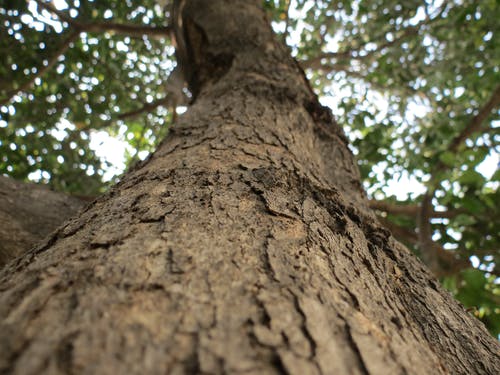Trees are fascinating plants that are very useful to human life on earth. They provide us with food, building materials, and oxygen. Trees can also be very pretty, especially when they change their leaf color in the fall. Every tree and its leaves have their own unique sizes and shapes. Trees do not require much in the way of food either. All they need to live on is sunlight, water, and air to make food. Another impressive thing about trees is that they actually hibernate in the winter. During the cold season, they’re able to survive without the usual nutrients by shedding their leaves so that they don’t waste energy.
One very wondrous tree is the African Baobab tree, otherwise known as the Tree of Life. The latter name is what native Africans call it, as this tree is central to their everyday life and culture. This level of importance is part of the reason why we should strive to know more about it. To this end, we’ll discuss the Baobab tree below:
Appearance of The Baobab tree
An odd thing about the Baobab is that its branches actually look like the gnarled roots of other trees, giving it an upside-down appearance when seen from a distance. The Baobab grows in the dry savannahs, eking out its survival there. When the Baobab is young, its trunk is straight and slender. When Baobab trees hit the age of forty, their trunks start to get a lot thicker. By the time they die, they can be about forty feet across and sixty feet tall. In fact, Baobabs can easily live to be over one thousand years old.
Like all trees, the Baobab also flowers and bears fruit. Its fruit is an edible one and also contains a lot of seeds. With such a long lifespan and the potential to bear so much life in turn, it’s no surprise that the Baobab is called the Tree of Life.
Size and Location
This particular tree species isn’t as tall as the redwood giants you find in America, but its sheer bulk makes it one of the largest trees in the world. The African Baobab can reach a height of 82 feet or 85 meters and can gain a bulk of about 14 meters or 46 feet in diameter. We can mostly find these trees all over Africa, though they mostly flourish in the dry climates that aren’t too tropical in nature. Immigration and globalization have led to the introduction of these trees overseas, so that we may now fund them in China, Oman, and India.
Honored by African Natives
The Baobab tree is so majestic, that it is honored as an elder by African natives. People also obtain honey from the tree though following the honey guide bird. This particular species can lead is to the bee’s nest deep inside the trunk of the tree for a piece of honeycomb. Humans also use the Baobab for other things, such as utilizing the roots and leaves as medicine. They also use its fruit for candy and its bark for baskets and ropes. Hollow Baobab trunks can serve as water containers and even homes if they’re big enough.
Some special birds are also known to make their home in the Baobab. These include the red-headed weaver, which makes fantastic hanging nests on the tree’s branches. When the dry season comes, elephants strip the Baobab of bark, looking for moisture inside. This isn’t a cause of worry, though, as the tree of life will grow a new layer of bark next season. It can then continue on as a safe haven for life amid the dead savannah.
The Species
The African Baobab is part of the genus called Adansonia, which is a group consisting of nine tree species. Only two species from this group are native to Africa, while the others are found in Australia and Madagascar. Adansonia kilima and Adansonia digitata (the baobab itself) are found within the African mainland. These trees are usually quite small, but we now know that the African Baobab is a glaring exception.
The Sunland Baobab
The Sunland Baobab is believed to be the widest one in existence. This is located in the Limpopo Province in Modjadjiskloof. The total height of this specimen is about 62 feet or 19 meters, with the diameter being 34.9 feet or 10.6 meters. The widest circumference of its trunk is about 109.5 feet or 33.4 meters.
This tree also has an immensely long life, with the measurement called carbon-dating making its age out to be about 1,700 years! An interesting fact about Baobabs is that they start becoming hollow after reaching the thousand-year mark. This is a natural feature and doesn’t mean that the tree dies out. Needless to say, the Sunland Baobab has a huge space inside of it, which must have been grown for seven centuries. The people who own this tree have made use of this space by turning it into a business establishment.
San Bushmen Tribe
The useful properties of the African Baobab are also why it’s called the Tree of Life. While it looks like a giant tree, its behavior is actually more like a succulent in the desert. About 80% of its trunk is actually water, which is why animals usually look for moisture inside it.
The San Bushmen tribe in particular traditionally relied on this tree as a water source of great value. This water feature is especially useful when it failed to rain for a long time and even the rivers ran dry. Just one baobab tree can hold around 1,189 gallon or 4,500 liters of water. If the tree is old enough, its hollow inside also provides shelter.
In fact, the baobab tree can very well create its own unique system in a dry, arid area. It gives food, water, and shelter to several species at once. The insect living inside the trunk and the huge African elephant can both depend on the baobab tree to sustain them. At the same time, humans can use the baobab for several products such as soap, glue, rubber, medicine, rope, and cloth.
The Baobab Fruit
The fruit of the baobab tree may also be called a superfruit. It’s like an oblong gourd covered with velvety skin. Inside, there are large black seeds and a powdery, tart pulp. African natives claim that the fruit and leaves of the baobab tree are both good for health, and have been consuming them for centuries. You can even cook the young leaves of the tree for a spinach-like dish. The pulp of the fruit, which is also referred to as monkey-bread, is soaked and blended to make a drink. The fruit is also what prompts many African natives to call the baobab the monkey-bread tree.
Even the Western world has accepted the baobab fruit as a superfruit, as it has large amounts of Vitamin C, potassium, iron, and calcium. The pulp might even contain around 10 times the Vitamin C of fresh oranges, and more calcium than the revered spinach. It’s also highly recommended for cardiovascular health, weight loss, and skin elasticity.
Legends Surrounding the Baobab tree
The Tree of Life is a part of African culture, so it’s only understandable that there are several stories, traditions, and legends surrounding it. One example of these is the legend that the baobab was once a tree that grew the right way up like all others. However, it considered itself better than other trees, so the gods decided to uproot it and plant it again upside down in order to impart a lesson.
Conclusion
From the discussion here, it’s clear that the African Baobab is hugely significant no matter where it grows. The way in which it provides for every other species, especially humans, is certainly impressive. It’s hence no wonder that there are so many stories, legends, and even novels about this legendary tree. Learning more about the baobab will also help us understand African culture better, which is important in the diverse world we live in today.


